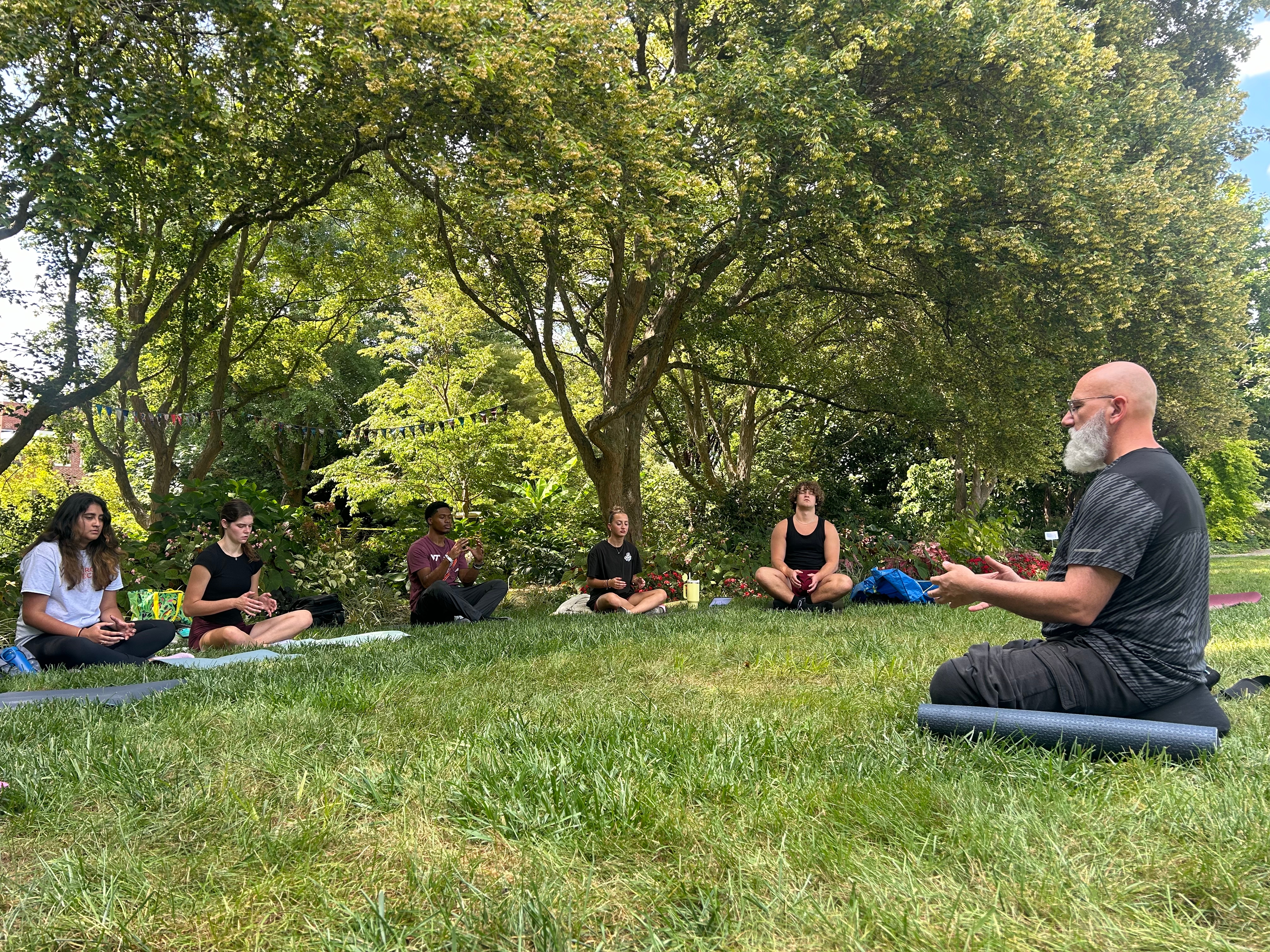November 2024
Gen Ed in Action

Meeting Demand: How Matthew Komelski transformed a popular in-person course to a hybrid-online curriculum for summer session
By Bethany Lenhardt, Undergraduate Education intern
In the four years it’s been offered, Adaptive Brain and Behavior has consistently been one of the most popular minors offered by Pathways General Education. Led by Matthew Komelski from the Department of Human Development and Family Science, it takes an interdisciplinary look at neuroscience, belief, society, and well-being.
“I felt like students were really interested in wellbeing,” said Komelski. “Not everyone wants to be a neuroscience or psychology major, but everyone wants to know ways to manage stress and feel better in their bodies and with this course, we really are meeting that need.”
But its popularity, however, created an unforeseen challenge; the interest in a gateway course, Integrative Health Practices (HD 2014), far exceeded the available space in the two sections offered each year.
The solution, Komelski said, was to create a novel hybrid model for the summer session, which he offered for the first time in 2024. Komelski’s challenge was to fit his experiential, practice-intensive course into the typically online summer session format. The solution was to teach the course in a hybrid format where students can learn informational content online and show up on campus for a few days of practical learning and social engagement with their peers.
The course explores and practices the concept of whole health – also known as the integrative health model – a model that reflects the wide range of domains that affect health. The course includes content related to all aspects of the Whole Health Model, but places special emphasis on mindfulness, movement, and rest, allowing students to explore a variety of practices including breathwork, visualization, yoga and moving meditations.
“Self-care is at the heart of both the integrative and whole health models,” he said. “Mindful awareness is becoming mindful and aware of the things that we need to do to take care of ourselves, and each of those dimensions plays a role in that.”
Komelski says that he hopes participating students find one or more practices that fit into their lives and help them garner better control of their stress management and self-care.
The new hybrid course is divided into two parts: the online session and the in-person practicum.
The course began during the second summer session with asynchronous studies of foundational subjects. Instead of concluding the course at the end of Summer II, students were expected to complete an in-person practicum during the week preceding the fall semester. The three days in August were dedicated to experiential learning, self-discovery, and peer-to-peer communication as students dove deep into the practices they learned online.
For faculty looking to offer a summer version of their course, Komelski recommends moving beyond simply instructing large amounts of information and reflecting on how the content could broaden a student’s horizons and find their place in the world.
“We can find ways to teach that give students what they want and need out of their education,” he said. “Our students are emerging adults, and emerging adults are trying to figure out the world and their place in the world. This course, in particular, helps students understand themselves and manage their stress better, which is valuable wherever they go”
Another component to success in this model is transparency about the non-standard end date and in-person requirement. Komelski suggests writing a comment in Virginia Tech’s timetable so students can plan for these obligations up front. He also suggests reaching out to enrolled students in advance of the start date to remind them of the course’s structure.
Faculty should be aware that students have preferences and obligations. Some may drop because they want a traditional online course or do not want to travel back to Blacksburg early.
Finally, Komelski suggests discussing options with your department head.
“Most summer classes can be offered with 10 to 20 students,” he said. “Because of the way the funding works, and because so much of it comes back to the departments, if your course is well-enrolled, department heads may be willing to support requests to support experiential learning.”
Komelski’s approach sets a strong precedent for future summer course development by balancing the demands of coursework with student engagement and well-being.


